|
In September, the addition of 61,000 restaurant jobs meant U.S. restaurant employment reached pre-pandemic levels for the first time in over three years. The gains in restaurant and bar employment were nearly double the average of 37,000 jobs added monthly throughout the past year. Of course, this comes as welcome news for many restaurant operators that have been struggling with the labor stresses of the past few years – and it provides some reasons for optimism about the potential for ongoing recovery in the sector.
But it’s also a good time to pause and take steps to help keep – and even build upon – these long-awaited gains. Labor attraction and retention is a perennial challenge in the sector. Restaurant operators have an opportunity right now to strengthen their culture in ways that help retain talent. Fine-tune your methods of communicating with employees – and for your team to share concerns or other input with you in ways that don’t feel intimidating. Survey them regularly to collect their feedback on what is going well and what support they need. Whenever you use their input to select a new employee benefit or adjust procedures or training practices, make sure they know you’re responding to their concerns. Give them some flexibility and autonomy. Allow them to schedule their shifts far in advance – ideally with an automated system they can access themselves – so they can balance work with other responsibilities and avoid burnout. Adapt training to accommodate different learning needs and native languages. Of course, the compensation you offer is important in getting people to apply for jobs at your restaurant – but it may not be enough to make them stay. Where possible, offer retention bonuses once they have been with you for a certain period of time and referral bonuses when they recommend new hires who stick around. If you offer rewards for performance, take cues from your loyalty program and allow people to choose the reward that best suits their personal tastes. And don’t neglect nonmonetary benefits that can make people feel more connected to the larger team – personal thank-you notes, team meals and mentoring opportunities can help improve engagement too.
0 Comments
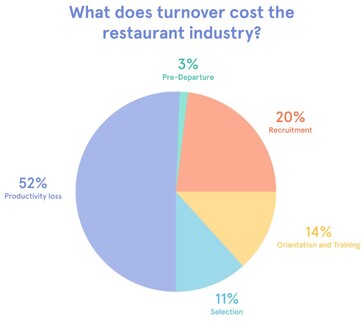 Think of everything you need to run your restaurant smoothly and uphold your brand: friendly service, an experience that feels like a good value, clean facilities, healthy sales and profits. If your employee turnover is high, all of these elements will suffer. On the other hand, if you find ways to limit turnover, you can generate exponential benefits for your business. You’re more able to delegate key responsibilities to management who treat the business as if it were theirs and find their own ways to deliver great customer experiences. Meanwhile, you’re able to proactively put systems in place that give you freedom to push your business forward instead of having to put out fires. Unfortuanatly, restaurant turnover is notoriously high and talented people have their choice of employers in the current market. Research from 7Shifts found that between August 2021 and August 2022, the average tenure of a restaurant employee was 110 days – just over three months. This costs the hospitality industry well over $5,000 per employee. Unfortunately, many operators don’t know their turnover numbers, so they’re not even clear on which stores need attention. Investing effort in the recruitment phase can help. When scouting out employees who are most likely to stay well beyond those 110 days, be deliberate about where you look. Seek out people who are already successfully employed and visibly doing great work. It’s not about poaching someone from another business. When you have a great experience with a server or manager at another restaurant, for example, you might say to the person, “You have a great work ethic. I’m sure you are happy where you are, but if you’re ever looking for an additional opportunity, please come to us first.” You can retain these people by training them well, demonstrating your values to them in authentic ways, identifying opportunities for them (and encouraging them and everyone else on the team to do the same), recognizing them and rewarding them. Rewarding your people isn’t just about money – a big bonus at a time when restaurants are having to pay higher wages already. According to 7Shifts, restaurants are offering such diverse benefits as rideshare credits for safe rides home after evening shifts, pet insurance, house cleaning or laundry service, English language tutoring, and school tuition reimbursement. Consider your staff’s lifestyles, life stages, needs and preferences when adjusting your benefits and rewards.  They don’t have to be intimidating, but they can be received that way. In fact, an uptick in surprise inspections, and the enforcement of stringent new operating standards, have been contributing to a “toxic” environment for franchisees of a certain global restaurant brand in recent months, according to news reports. Operators say the more frequent inspections have been distracting managers and staff and have resulted in managers departing for competitors – all despite a strong pandemic performance from the brand. To be sure, restaurants are under increased pressure to prepare and serve food safely and at faster speeds than before. But making the competitive pressure not simply nonpunitive, but also motivational, can help you retain labor at a time when so many restaurants are vying for it. It can also help you set a foundation in which higher standards become embedded in your culture and don’t get diluted in repeated waves of new staff. Across your operation, how can you make inspections and the enforcement of new standards feel more like a reward and less like a reprimand?  Staffing is an ever-moving target for restaurants, even in smooth economic times. While the National Restaurant Association reports that restaurants have added jobs for 24 consecutive months, restaurants are still 3.6 percent below their pre-pandemic staffing levels. Hiring more people for existing roles may not even be the sustainable answer: A National Restaurant Association survey conducted in November found that 62 percent of operators say their restaurant does not have sufficient employees to support current customer demand – and 87 percent of operators say they will likely hire additional staff over the next 6-12 months if they can find qualified applicants. (That’s yet another challenge: 80 percent of restaurant operators say they currently have job openings that are difficult to fill.) However, that situation could easily flip in a different direction depending on the economy: The survey found that 57 percent of operators say they would likely lay off staff over the next 6-12 months if business conditions deteriorate and the U.S. economy dips into recession. It’s not a climate that makes it easy for restaurants to hire or appealing for applicants to apply. Your tech stack – and your approach to filling roles – can make your operation more scalable and less susceptible to the ups and downs of the economy. If you’re in the position of posting difficult-to-fill jobs, what can make them easier to fill or less dependent on the right candidates? Are there opportunities for automating repetitive or dangerous tasks – or for overhauling existing roles so they can flex with the business and encourage staff to develop skills and stay for the long term? Are there tasks that currently involve more labor than they need to?  Operators are addressing the labor problem from different angles – and with short-term and long-term strategies. Larger restaurant brands have been able to boost wages and offer retention and referral bonuses to entice workers to join (and remain at) the restaurant. CNBC reported that brands including Papa John’s, McDonald’s, Darden Restaurants, Chipotle, Texas Roadhouse, Burger Fi and P.F. Chang’s are among the brands offering such incentives. Restaurants are also trying to circumvent hiring and retention challenges by adopting more technology that can automate a wide range of front- and back-of-house functions once handled by staff – tasks ranging from the streamlining of orders from multiple sources to the management of inventory. To be sure, these actions may be more feasible for larger, resource-rich restaurant brands, but there are solutions for smaller independents. This past summer, for example, New York announced a $35 million aid program designed to encourage independent restaurants throughout the state to hire more workers – for every new hire, the restaurant could get a $5,000 state tax credit, up to a maximum of $50,000 per operation, Restaurant Business reported. (Learn more about that program at esd.ny.gov.) Regardless of a restaurant’s size, now could also be prime time to recast what restaurant jobs look like – and present them as viable long-term career opportunities as opposed to short-term gigs. For some operators, that could mean restructuring their business model to make employees true partners in the enterprise, with a stake in the success of the business. It may also help to design more robust training programs that could usher an employee through a rotation of roles in different parts of the business, which could offer the dual benefits of increasing retention of skilled team members and better ensuring a business can adapt when it is short on staff. Whatever you do to make changes, focus on making and sustaining connections with employees. Create incentives for existing employees to refer good people to you when you have openings. Establish platforms and channels for employees to connect with each other and with management, to ask questions, and to openly share feedback and concerns. Employees who feel more connected to the business are more invested in contributing to its success.  Even before the pandemic, labor recruitment and retention was a major challenge for restaurant operators. Now that we’re in a position where business is suddenly ramping back up and all restaurants are looking for staff at once, that challenge has ballooned. It’s causing operators to create new talent pipelines, rethink roles and find ways to automate more tasks. Along those lines, the fast-casual chicken chain PDQ is expanding upon its relationship with Best Buddies International, a nonprofit organization that seeks to create opportunities for people with intellectual and developmental disabilities. Nation’s Restaurant News reports that the chain has set a goal of hiring at least one person from the organization to each of its 45 locations in Florida. Wage increases aren’t feasible for all restaurants, but some brands are trying that too, in addition to taking steps to recast restaurant jobs as careers: Chipotle, for one, is raising its hourly wage to $15 and also creating a new career path for aspiring restaurateurs that allows managers to earn salaries of $100,000 in as little as three and a half years. Finally, operators are assessing ways to speed up or automate tasks so they are less reliant on labor fluctuations. Robin Gagnon, co-founder of We Sell Restaurants, told Modern Restaurant Management that robotics are being tested at every position at a restaurant, ranging from cooks to table service, and that we’ll see more ordering via app and kiosk now that consumers have grown accustomed to it. In the kitchen, Gagnon predicts that more concepts will look to get food out more efficiently by preparing items in advance and assembling them rather than offering full service.  As restaurants reopen again in a big way, they are facing yet another unprecedented challenge, though one that probably would have been welcome last spring: having to hire new staff to handle a steep rise in business at the same time as all of the other restaurants in the area. Not only are restaurants having to make themselves appealing to customers beginning to venture out again right now, but they are also having to put their best foot forward for potential foodservice employees who can have their pick of employers. As a recent New York Times report suggests, at a time when an extra dollar or two could mean the difference between attracting an employee and not, it’s important to understand what your competitors are paying. Is there room for you to partner with other restaurants in your area to exchange ideas, share staff or pool resources that could drive interest in your businesses? Consider paying referral bonuses to existing employees who recommend another staff member once that person has been on your team for a set period of time. Take another look at your needs – could you hire someone inexperienced but eager and train them instead of holding out for a more experienced person who meets a longer list of criteria? Also assess the benefits (financial and non) that you’re able to offer, from meals to career development opportunities to loyalty bonuses for employees who stick with you for a while. |
ArchivesCategories |
Foodservice CEO is provided for informational purposes only. It is intended to offer foodservice operators’ guidance regarding best practices in running their operations. Adherence to any recommendations included in this Guidance will not ensure a successful operation in every situation. Furthermore, the recommendations contained in this website should not be interpreted as setting a standard of operation or be deemed inclusive of all methods of operating nor exclusive of other methods of operating.
Copyright 2023 Team Four Foodservice, All Rights Reserved.

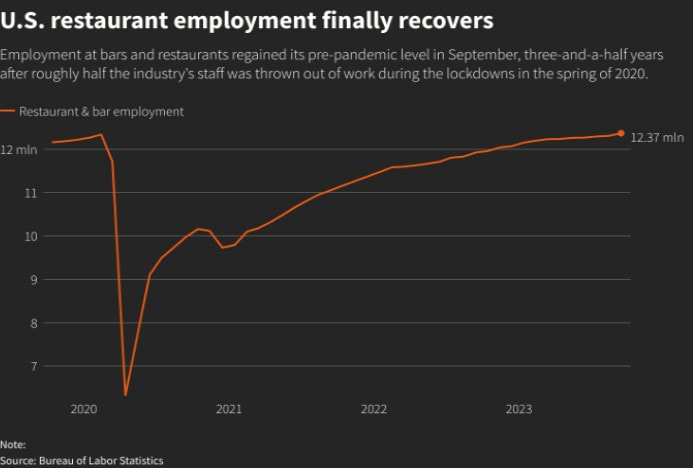
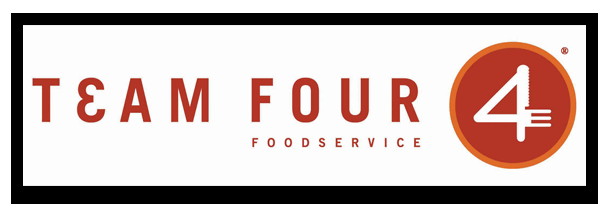
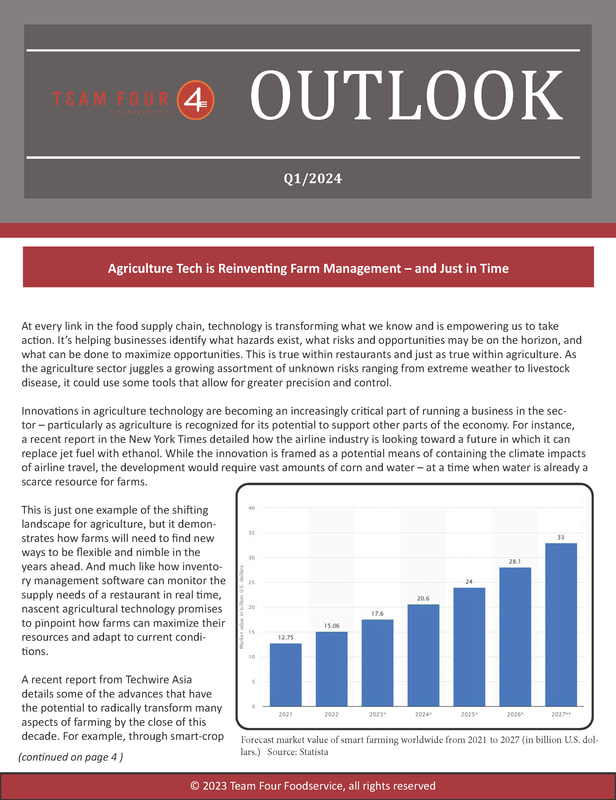
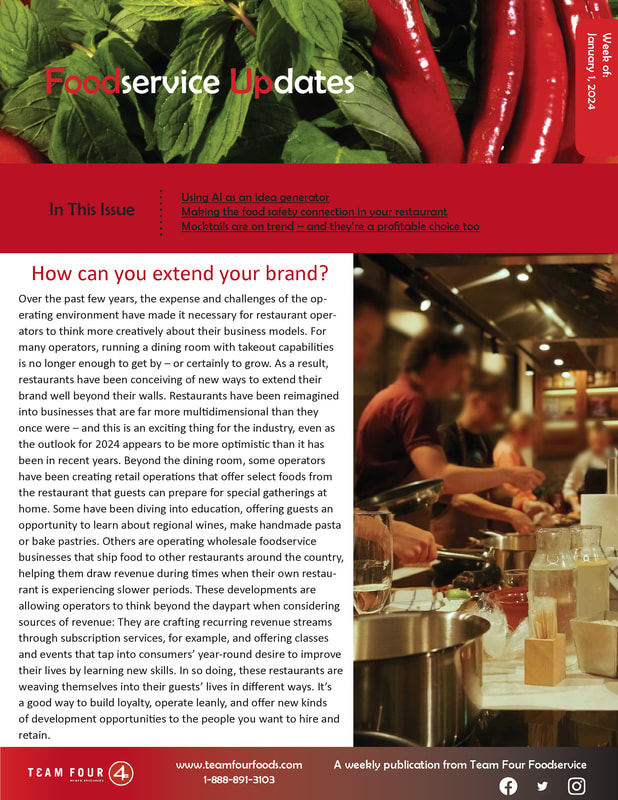
 RSS Feed
RSS Feed